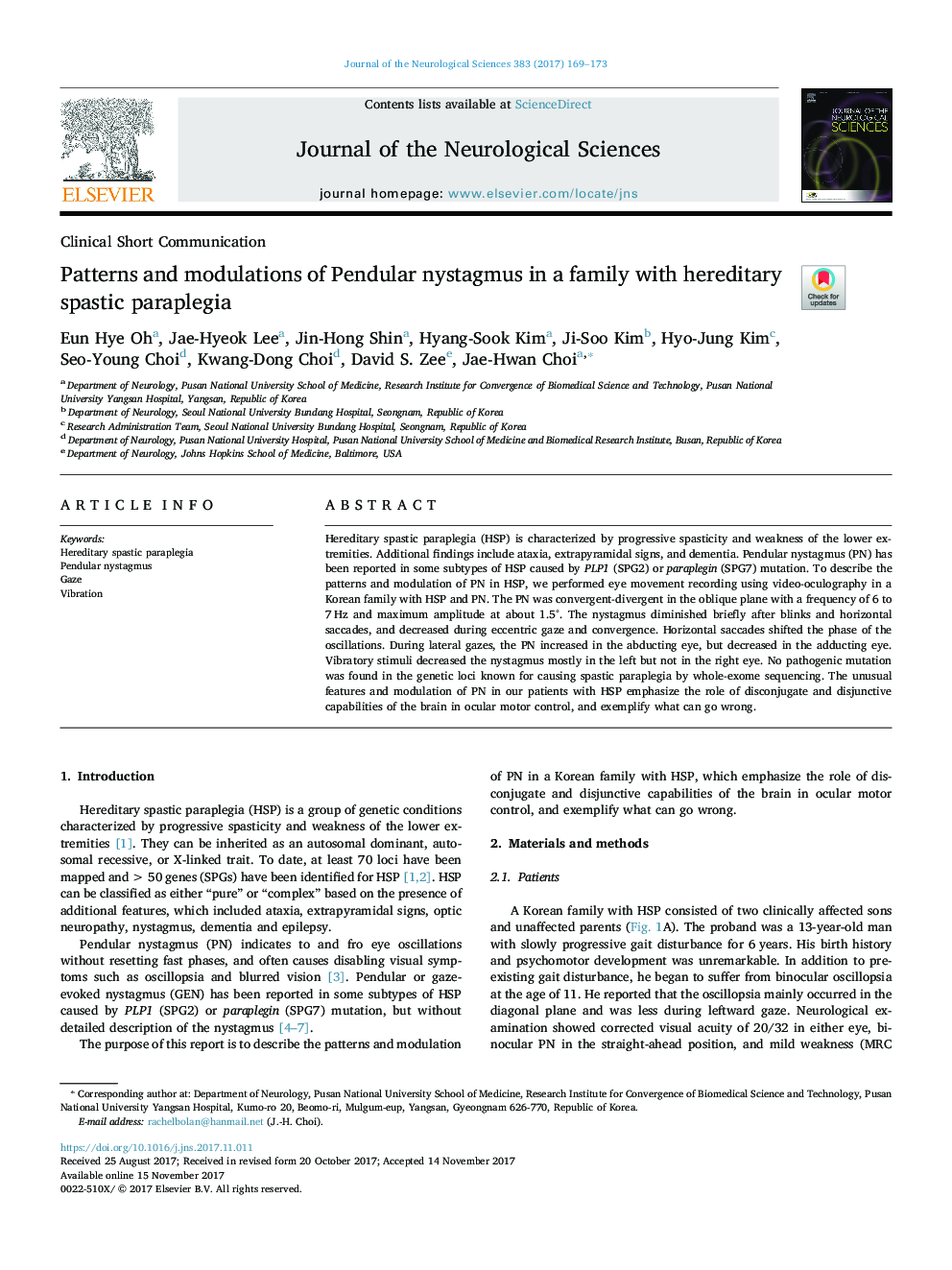| کد مقاله | کد نشریه | سال انتشار | مقاله انگلیسی | نسخه تمام متن |
|---|---|---|---|---|
| 8273242 | 1535078 | 2017 | 5 صفحه PDF | دانلود رایگان |
عنوان انگلیسی مقاله ISI
Patterns and modulations of Pendular nystagmus in a family with hereditary spastic paraplegia
ترجمه فارسی عنوان
الگوهای و مدولاسیون نایساگموس پاندول در خانواده ای با پاراپلژی اسپاستیک ارثی
دانلود مقاله + سفارش ترجمه
دانلود مقاله ISI انگلیسی
رایگان برای ایرانیان
کلمات کلیدی
پاراپلژی اسپاستیک ارثی، نایساگموس پندال، خیره شدن، لرزش،
موضوعات مرتبط
علوم زیستی و بیوفناوری
بیوشیمی، ژنتیک و زیست شناسی مولکولی
سالمندی
چکیده انگلیسی
Hereditary spastic paraplegia (HSP) is characterized by progressive spasticity and weakness of the lower extremities. Additional findings include ataxia, extrapyramidal signs, and dementia. Pendular nystagmus (PN) has been reported in some subtypes of HSP caused by PLP1 (SPG2) or paraplegin (SPG7) mutation. To describe the patterns and modulation of PN in HSP, we performed eye movement recording using video-oculography in a Korean family with HSP and PN. The PN was convergent-divergent in the oblique plane with a frequency of 6 to 7 Hz and maximum amplitude at about 1.5°. The nystagmus diminished briefly after blinks and horizontal saccades, and decreased during eccentric gaze and convergence. Horizontal saccades shifted the phase of the oscillations. During lateral gazes, the PN increased in the abducting eye, but decreased in the adducting eye. Vibratory stimuli decreased the nystagmus mostly in the left but not in the right eye. No pathogenic mutation was found in the genetic loci known for causing spastic paraplegia by whole-exome sequencing. The unusual features and modulation of PN in our patients with HSP emphasize the role of disconjugate and disjunctive capabilities of the brain in ocular motor control, and exemplify what can go wrong.
ناشر
Database: Elsevier - ScienceDirect (ساینس دایرکت)
Journal: Journal of the Neurological Sciences - Volume 383, 15 December 2017, Pages 169-173
Journal: Journal of the Neurological Sciences - Volume 383, 15 December 2017, Pages 169-173
نویسندگان
Eun Hye Oh, Jae-Hyeok Lee, Jin-Hong Shin, Hyang-Sook Kim, Ji-Soo Kim, Hyo-Jung Kim, Seo-Young Choi, Kwang-Dong Choi, David S. Zee, Jae-Hwan Choi,
